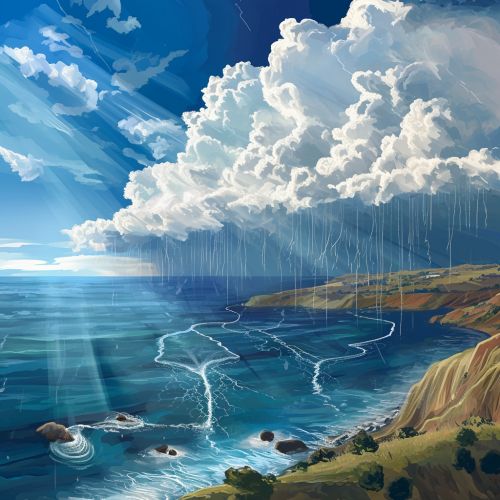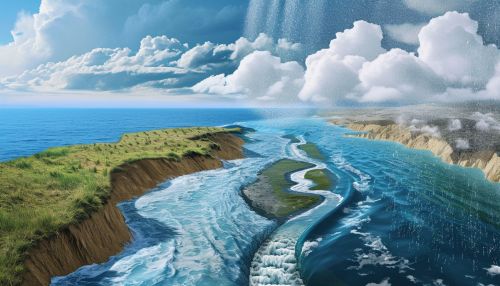Hydrological Cycle and Water Resources
Introduction
The hydrological cycle, also known as the water cycle, is a continuous process by which water circulates from the earth's surface to the atmosphere and back. This cycle plays a crucial role in the distribution of the earth's water resources and has a significant impact on the climate and ecosystem. The hydrological cycle involves several stages including evaporation, transpiration, condensation, precipitation, and runoff.


Evaporation
Evaporation is the process by which water changes from a liquid state to a gaseous state, known as water vapor. This primarily occurs in the oceans, seas, and other large bodies of water. The rate of evaporation depends on several factors including temperature, humidity, wind speed, and the presence of particles in the air.
Transpiration
Transpiration is the process by which water is carried through plants from roots to small pores on the underside of leaves, where it changes to vapor and is released to the atmosphere. This process is essentially evaporation of water from plant leaves. It is an important component of the water cycle as it contributes to the moisture content of the atmosphere.
Condensation
Condensation is the process by which water vapor in the air is changed into liquid water. This is the opposite of evaporation. Condensation is crucial to the water cycle because it is responsible for the formation of clouds. These clouds may produce precipitation, which is the primary route for water to return to the Earth's surface.
Precipitation
Precipitation occurs when so much water has condensed that the air cannot hold it anymore. The clouds get heavy and water falls back to the earth in the form of rain, hail, sleet or snow. Precipitation is the primary pathway for water to return to the Earth's surface.
Runoff
Runoff occurs when water falls on the land, flows over the ground surface and collects in rivers, lakes and oceans. Some of the water infiltrates into the ground and replenishes aquifers, which are the source of our groundwater.
Water Resources
Water resources are sources of water that are useful or potentially useful to humans. They include groundwater, surface water, rainwater, and even desalinated seawater. Water resources are essential for agriculture, human consumption, industry, and energy production.
Impact on Climate
The hydrological cycle has a profound impact on the climate. Water vapor is a significant greenhouse gas and plays a major role in global warming. Changes in the hydrological cycle can result in floods, droughts, and other severe weather events.
Impact on Ecosystem
The hydrological cycle also has a significant impact on the ecosystem. It affects the distribution and abundance of species, the functioning of ecosystems, and biodiversity. Changes in the hydrological cycle can lead to habitat loss, species extinction, and changes in ecosystem services.
